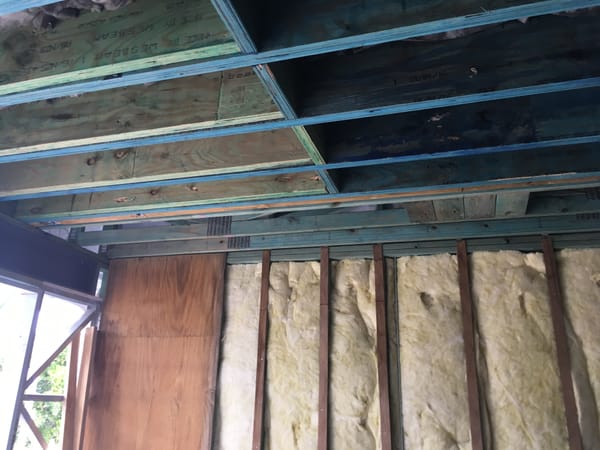Are you tired of feeling lost during conversations with your builder? Do terms like "joist," "rafters," and "fascia" leave you scratching your head? If so, fear not! Our essential guide to builders' jargon is here to help.
We've compiled a list of common construction terms and their meanings. This guide will have you speaking the language of “the” builder in no time!
THE BENEFITS OF KNOWING BUILDERS' JARGON
There are many benefits to understanding builders' jargon. For one, it can help you save money by avoiding misunderstandings that could lead to costly mistakes. It can also help you make more informed decisions about your project, and avoid potential delays or other issues.
Additionally, knowing the lingo can simply make the construction process more enjoyable. It's always more fun to chat with your contractor about the progress of your "plasterboard installation" rather than just asking how the walls are coming along!
WORDS HOUSE BUILDERS SAY AND WHAT THEY MEAN
There are a lot of words and phrases that you'll hear from house builders, and it can be difficult to know what they all mean. To help you understand what's being said, we've put together a guide to some of the most common words and phrases used by builders, and what they actually mean.
A lot of the jargon used by builders is related to the materials they use. If you're not familiar with the terminology, it can be difficult to know what's being discussed. Here are some of the most common terms you'll hear, and what they mean:
Abutment - A support structure that transfers loads from a bridge or arch to its foundations.
Acoustic plasterboard - A type of plasterboard that is used to reduce noise within a room
Allowance - An amount of money that is set aside for specific items or tasks during the construction process
Articulation joint - A joint used to connect two members that are not directly connected. A gap between members that allows growth, expansion, contraction or thermal movement.
As built drawings - Drawings that show the actual measurements and layout of a property, as opposed to the proposed design. Often requested as builts relate to services like electrical, plumbing, water and sewerage services.
Batten - A long, thin strip of wood or metal used in construction, typically to screw down roofing or fix plasterboard.
Balustrade - A railing, usually made of wood or metal, that is used to support stairs or balconies
Base course (or 1st course): The lowest layer of a brickwork that is supported by the slab rebate or foundation upon which the remainder of the built wall sits upon.
Beam - A horizontal structural member that supports loads from above.
Brick – a modular unit, usually a rectangular block of fired clay or concrete that's used for building external walls.
Brickwork - this refers to the construction of walls using bricks
Brick Veneer - a veneer of brick that is secured to a wall or other structure to provide a waterproofing barrier
Cantilever - A projecting beam or member supported at only one end. Commonly used in decks and balconies.
Cavity Wall - a wall with an empty space (or cavity) in the middle, which helps to insulate the home
Cement – a powdery substance made from limestone and clay that's mixed with water to make mortar or concrete.
Column - A vertical structural member that supports loads from above.
Cladding - material used to cover the outside of a building, for example brick or render
Concrete – a mixture of cement, sand, gravel and water that's used for paving or building foundations, floors and walls.
Cross bracing - Diagonal members used to strengthen a structure against lateral forces.
Damp Proof Course - A waterproof layer laid in between the floor and the wall, and below the flooring, to prevent moisture from entering a building.
Dowel - A small cylindrical rod of wood or metal used to join two pieces of wood or other material together.
Extension of time - is a delay which could not be reasonably foreseen at the time of contract signing. The granting of an Extension of Time relieves the contractor from liability of damages such as Liquidated Damages from the original date of contract completion for the period of the claim.
Fascia - The term 'fascia' derives from Latin and means ‘band’ or ‘ribbon’. s a horizontal band which runs along the lower edge of a roof where it overhangs the building’s outer walls, helping close the gap between the roof and the wall
Footing - this is the foundation of a structure, and is usually made from concrete
Gable - A roof shape that has two slopes, one on the front (a) and one on the back (b).
Gravel – small stones that are usually mixed with sand or cement to make concrete.
Inspection opening - a small opening in the wall that allows inspectors to check the condition of the building's walls and roof
Joist - A horizontal structural member that supports floor and ceiling loads.
Load bearing wall - a wall that carries a structural load.
Lintel - A beam placed over an opening, such as a door or window, to support the weight of the structure above it.
Manhole - a small opening in the roof used to access utilities or storage
NPC - a smart ass term a generation of people say that is derived from video games and means - non player character (a background character)
ORG - overflow relief gully - the lowest sewer fixture in your home providing a location for a back blocked sewer to discharge to rather than backup through your home fixtures (floor wastes & toilets).
Plasterboard - Also known as drywall or gypsum board, drywall is a panel made of gypsum plaster sandwiched between
Plinth - The base course of a building's wall below ground level; also refers to the bottom step of a staircase.
Progress claim - a document that shows the state of a project at any given time, and is used to make a claim for compensation if the project falls short of expectations
Progress report - a document that shows the state of a project at any given time
Rafter - The beams that form the sloping roof frame of a building.
Sand – a loose, granular material made up of tiny pieces of rock that's often used as an ingredient in mortar or concrete.
Slab - a type of foundation that is made of concrete and is poured directly onto the ground
Stud - a vertical structural member, often made from wood, used to support the weight of a roof
Timber – wood that has been cut into beams or planks for use in construction.
Variation - any change to a plan, often made in order to take into account unforeseen circumstances or client requests after a contract is signed.
Specifications - the written requirements for a project, including the design, materials, and methods of construction
Schedule - a plan of when work on a project is scheduled to be completed, usually broken down into stages
Waffle pod - a void former used under slab to create pockets so that less concrete is used under the slab
Weephole - a small opening in a wall or roof that allows moisture to escape
CONCLUSION
We hope this guide to builders’ jargon has been helpful in demystifying some of the lingo used by builders. Knowing what they are talking about will not only help you feel more comfortable when discussing your project with a builder, but it can also give you peace of mind knowing that the work being carried out is up to code and done correctly.
With this knowledge, you should be able to navigate any conversation relating to your building project like a pro!







